
“Red skies at night—Tony Daniel’s delight.”
Man, you know those guys who turn around and post reviews for comics as soon as they come out? Sometimes even before they come out? Way, way back in the day, I used to be one of those guys. Okay, maybe not the day of but, you know, I’d work at CE on Friday, write reviews on Saturday, get them up before the end of the weekend. It was kind of fun back in the days where my only serious commitment was to, I dunno, Dragon Quest VIII or something. (Speaking of which has anyone played Dragon Quest VIII for the iPad? Is it any good? I’m asking for…a friend. A friend who’s on the second day of a two week vacation for which he vowed he’d devote some serious time to goofing off—okay, okay, I’m asking for me, all right? I’m asking for me!)
Anyway, the neverending Sketchook entry is still far from finished and not even all that interesting to me anymore personally (which is a drag considering the time already sunk into it), and coming back from the store yesterday and looking at my wide-open schedule I thought, you know, why not get the band back together for one last gig? “Let’s read some comics and say what we thought about them, and then post it on the Internet!” I thought. “That’ll teach me!”
Anyway, these are mostly in alphabetical order except when I think I have something clever to say, in which case they’re not. That’s sorta fair, right?
ARKHAM MANOR #1: SPOILER THIS TAKES PLACE AFTER THE EVENTS OF BATMAN ETERNAL #30. Technically, that really shouldn’t be a spoiler but since Editorial didn’t disclose it until page four of the book, I’m assuming it’s something they were trying to keep under wraps from the casual browser. Unfortunately, this casual browser read that and went “damn it,” because he’d already bought the damn book. Since Batman Eternal #28 came out this week, I have the choice of either spoiling those two issues (although I’m pretty sure I already did by reading panel three of page one) or putting this aside.
So. In two weeks: My review of Arkham Manor #1! SPOILERS: I will complain about the scheduling problems of the Bat-Editorial Department.
BATMAN ETERNAL #28: Meanwhile, this week in “wait, where the hell does Batman think Alfred is again?” Ray Fawkes returns to run the ball a little farther up the field on his “spooky shenanigans in Arkham” story. I’m not much of a fan of this storyline, in part because I generally don’t like spooky shenanigans mixed in with my Batman stories unless Mr. Bob Haney is holding the swizzle stick, and in part because giving the story to Batwing, the only Bat person of color, and having him play second banana to New52 Jim Corrigan is deeply, deeply WhiteDumb. (I’m trying to rebrand racism so that maybe white people can own up to it a little easier rather than getting all upset when someone points out they’re being racist. Let me know how I’m doing.)
But this issue had a number of nice beats, with Simon Coleby’s art given an enjoyably smoldering palette by colorist Romulo Fajardo, Jr. And the pacing at the end was aces, intercutting Batwing assembling his armor, all hell breaking loose in Arkham, and the code of the Riddler being computer decoded before our very eyes. Sure, that pacing is almost utterly generic now thanks to the preponderance of hyperactive thrillers on TV and in movies but…at least it was done well and kept me turning the pages attentively even when, really, part of me was like, “man, where the hell are my Brave and The Bold Showcases?”
To sum up: this was an okay issue, and I’m looking forward to getting drunk later and digging through my longboxes to find those Showcases.
AQUAMAN #35: I think this is my last issue because even though I dig Jeff Parker’s characterization of Aquaman as The Introverted Guy Who Would Be King, I’m just not into Atlantis. Atlantis is that kid brother every Aquaman writer either tries to ditch or, with a heaving sigh, turns their attention to and tries to give a makeover so they’re not embarrassed to be seen in public with. One good thing about getting to my age is being able to acknowledge the only thing I care less about than a fantasy kingdom is an underwater fantasy kingdom. Sorry, Aquaman: it’s not you, it’s me.
STUMPTOWN #2: That previous issue which I apparently bought twice was on my mind as I went into the store today, in part because I was thinking something like: remember, dummy. Do not buy two copies this time.
But also I was thinking about how I dug the whole “here’s a murder mystery about Portland soccer fans,” in part because it so obviously seemed like writer Greg Rucka was just a huge Portland soccer fan. It made me think about that one issue of Moon Knight where suddenly the cast gets all broken up over the death of John Lennon and what’s-her-name is playing the piano and then crying. It was an embarrassing issue to read as a kid because it so clearly didn’t have any kind of place in a story about a multiple personality Batman-by-way-of-werewolf’s-blood superhero (although, let’s face it, if each one of Moon Knight’s personalities had a different favorite Beatle and drove the rest of surrounding cast insane about it, that would’ve been pretty great). And yet, I also dug it. Before disposable pop culture took over the world, it was kind of neat to see people pack thoughts about pop culture into other pop culture. And Stumptown issue one reminded me of that, and how much I used to really like it.
Issue two reminded me that while I find this stuff great to read in trades, I find it pretty draggy in the single issues. Although there’s every chance it will pay off in later issues, there were way too many pages of people talking about how much they care about the victim and how important it is that the perpetrators get caught, and…I don’t know, isn’t that the kind of thing that doesn’t really need that much justification? Too many samey-seeming scenes in one issue for my taste. Reading it felt like I was right on the verge of some kind of realization about something… but it took me a few more books for that to come together.
SUPERMAN #35: Considering how slowly this book is unfolding, I don’t think it was helped by that Future’s End skip month issue. (I call it a skip month because I skipped it.) I saw issue #35 on the stands and was like, “wait, am I still…reading this?”
I am, in part because I keep trying to figure out what I like about John Romita, Jr.’s art? It’s a weird style, one where I feel like I’m always noticing something new. Like…did you know we had so many wrinkles on our nose? Maybe it’s a side-effect of having our noses broken so many times? You can look at a character in profile and sometimes their nose will look broken—clearly broken, like big old knot at the bridge and then mashed up against the face below that—and then on the next panel it won’t be? And then in a medium shot it will be wrinkled? It’s a fascinating world John Romita Jr. lives in, where people’s noses behave like dog’s noses, springing to attention before lolling back brokenly above their marionette mouth.
Seriously: I like the guy’s work. Like I said on a podcast, it reminds me more of Gil Kane (or, in this issue, Frank Robbins for some reason) than John Romita, Sr. Also, I think I just really like what the guy does with body language.
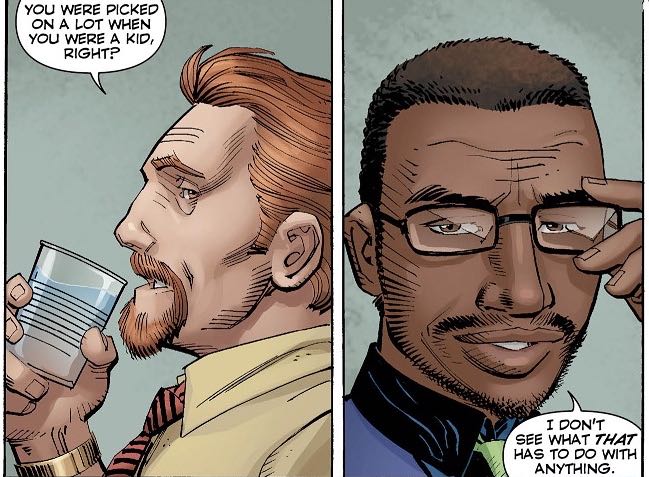
NOSES.
Anyway, Johns’ story doubles down on his “let’s make Superman the most boring part of this Superman story,” which is a shame. I can see how a Superman analog is our modern equivalent of the old DC Imaginary Story, where wacky hijinks will show us that it’s important that Superman be a superhero only in the most reactive, passive sense of the term. But I found the end of this issue a bit of a bummer: having Superman decide to use a supercity in an alternate dimension to house six million people to build a better tomorrow? It’s a drag that story hook goes to not-Superman, instead.
ZERO #11: Tonally, Ricardo Lopez Ortiz’s art ran the gamut in this from absolutely perfect to kind of unfortunate: perfect for the scenes of Edward Zero having a few moments of peace and happiness, and even when the tension starts to crank up…but the facial expressions in the fight scene made it feel a little too much like something out of The Castle of Cagliostro. And even though it was twenty-four pages of story, the issue felt a bit light to me which suggests it either needed just a dash more story in there or all those old issues of Avengers are totally throwing off my sense of story pacing. Probably the latter. Decent little issue overall, though.
STARLIGHT #6: I guess I’m glad my current phase of comic book reading is more focused on the art because every bit of Mark Millar’s storytelling in this was rubbish. Duke’s escape, his cigar smoking return, that kid yelling out Duke’s name even though he is in the process of being hanged (seriously, how can Mark Millar not know how strangulation works?), the final showdown with Kingfisher and Duke…just a big old heaping pile of garbage.
But, of course, Goran Parlov does something great on every page. I could never make fun of his faces the way I do John Romita, Jr.: his characters are cartoony but he can draw them at any angle and the exaggerations stay completely proportional. And of course, the faux-Moebius stuff going on in the backgrounds (aided a ton by Ive Svorcina)? I was just really happy to read 30+ pages of Parlov’s work in one go…at least until I got to the back page and remembered the price tag for doing so was five bucks.
Overall, Starlight was a pretty good reminder why I don’t read Mark Millar comics anymore. I hope Parlov sees some decent Hollywood money out of it, and someone scoops the guy up to do their much better book. But…well, let’s just say I’m very, very glad this was the mini and Jeff Parker and Doc Shaner’s Flash Gordon is the ongoing, let’s put it that way.
DEATHSTROKE #1: Probably the book I was most excited to pick up this week since it’s the return of Tony Daniel writing and drawing a book while his editors go and huff glue, or do whatever it is they do instead of saying, “Uh, Tony Daniel, shouldn’t we have more of a story here?” like they probably should.
On the one hand, this has a lot of the stuff I love when Tony Daniel writes and draws his own book. Blood-red skies? Check. Hot women with some sort of disfigurement a la a Metal Gear Solid game? Check. Ganking stuff from Frank Miller, including creating an outrageously unsubtle Wolverine analog to make fun of? Check. There’s several pages of really fun over-the-toppery, like when the bad guy gets free and just starts hacking pieces off Deathstroke with his own sword, or when Deathstroke returns the favor by lopping off people’s heads in a ridiculously glorious bottom-up perspective.
But on the other hand, even with the embarrassingly low bar I set for Tony Daniel comics, this just barely cleared it. Kinda knocked the bar off with its back foot as it went over, frankly. While I’m glad the book is free of the “this story is all about the hero and the hero’s past and how it’s really their most personal, dangerous dramatic adventure the hero’s ever had!”, it was also just a little too low-stakes for me: Deathstroke (which I just typo’d as Deathstorke, which I now pray to God someone will do in any Captain Carrot revival that comes down the pike) gets a contract to bump off a bunch of guys including Wolverine analog (also funny for a Captain Carrot revival: A wolverine named Wolverine?) and then it turns out to be a trap to get the secret memories hidden in Deathstroke’s head and then he has to swordfight his way out of an ambush? I was pretty emotionally uninvested. Plus, on the last page, beneath the newly young Deathstroke in his blood diaper yelling “What did you do to me?” there’s a next issue box hollering, “NEXT: The Secret Past of Slade Wilson!” So…cue up the story bit about Deathstroke’s past and how this is really the most personal, dangerous dramatic adventure he’s ever had. Damn it.
Still. It’s only $2.99 and I have every hope Daniel will introduce thirty-seven villains next issue, some of which will look like ordinary household objects wearing top hats so…I’m far from giving up the book.
MEMETIC #1: Jesus, another $4.99 book? Sure, it’s 32 pages of story but…that’s a lot of investment for the first shot of a three issue miniseries, don’t you think?
Or maybe I’m just extra-cranky because those 32 pages had a lot of what felt like the same scenes over and over: it’s kind of tough when you’re doing a story about a memetic invasion not to fall into “PAGE FIVE: More people love the Good Times Sloth and say it makes them incredibly happy to look at. PAGE SEVEN: Even more people love the Good Times Sloth and say it makes them incredibly happy to look at. PAGE THIRTEEN: Now all the world loves the Good Times Sloth and say it makes them incredibly happy to look at.” But…I got to the end of these 32 pages, most of which are spent in and around just a few characters resistant or suspicious of the hypno-sloth, and I don’t know if we really got more than a superficial “here are the contours of this character” take on anyone.
James Tyrion IV and Eryk Donovan are quite good at keeping the pace on a page by page basis and things started to go bad exactly when I was hoping they would, but…the work just missed being strong enough to get me back. And then I look at that price tag again and cringe. It’s probably the right move for Boom! to make in this market where there’s a lot of issue #1 speculation for indie titles but I mean that it’s “right” in a possibly-too-cynical kind of way.
LAZARUS #12: So remember what I was saying all the way up there about Stumptown and Greg Rucka and being right on the verge of some kind of realization? Lazarus #12 is where I cracked that code, and the code is: Chris Claremont.
Chris Claremont. Chris Claremont. Chris Claremont.
Screw Cyclops: Marvel should put Greg Rucka on an X-Men team title because Greg Rucka is Chris Claremont as fuck. Reading this issue of Lazarus where all of the world’s controlling families get together for a big “let’s all try and sway other families to our side on important issues that will advance our creepy agendas” and the biggest emotional beat is…having Forever, who doesn’t dance, have to dance in front of everyone at the big gala with the guy who looks a little too much like Tom Hiddleston for my liking.
CHRIS CLAREMONT.
The same way Mr. C was hyper-plugged into the emotional lives of his characters (especially their discomfort), and pushed for a “strong women to the point of making other men roll their eyeballs” agenda, and in fact more or less made a lot of hay by having the latter have to confront the former? That’s pretty much Rucka’s work, too.
Unfortunately, like Claremont, Rucka is a big ol’ ham, and so his drama can come off a little too melodramatically and—even worse—his characters tend to all sound samey and bloviatey. There’s a scene here where Forever chats and works out with two other Family “Swords,” and at first I was all, “oh, this is cool, we get to see how they interact and watch them gossip and that should be fun.” But none of the characters had any surprise to them, and the snap in the dialogue was precisely and exactly the kind of “oh, she’s timid; he’s extreme; and she’s reasonable, watch how every single piece of this reinforces that,” creators have to learn to achieve and then strive to subvert as soon as possible.
A ham actor gets a lot of mileage out of their commitment (and/or over-commitment) to the part, which can be surprising and fun…but it can also make them crashing bores because the only thing they know how to do is TURN UP THE VOLUME and (turn down the volume). There wasn’t one scene that surprised me in this issue, and considering it’s layered with characters I’ve either never met or didn’t bother to even remember, that’s a little depressing.
So Greg Rucka should break that habit, probably? Or, if he can’t, put it to use on an X-Men title where the nostalgia will cover up boredom’s sting.
POSTSCRIPT: Guess who forgot to buy Multiversity? Arghhhhhhh……






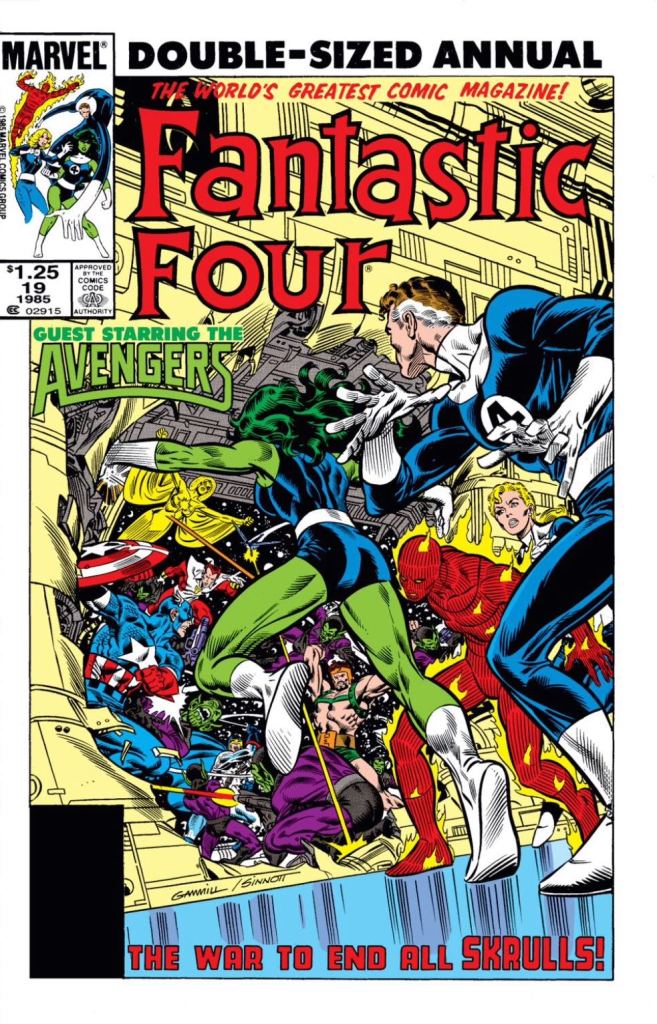
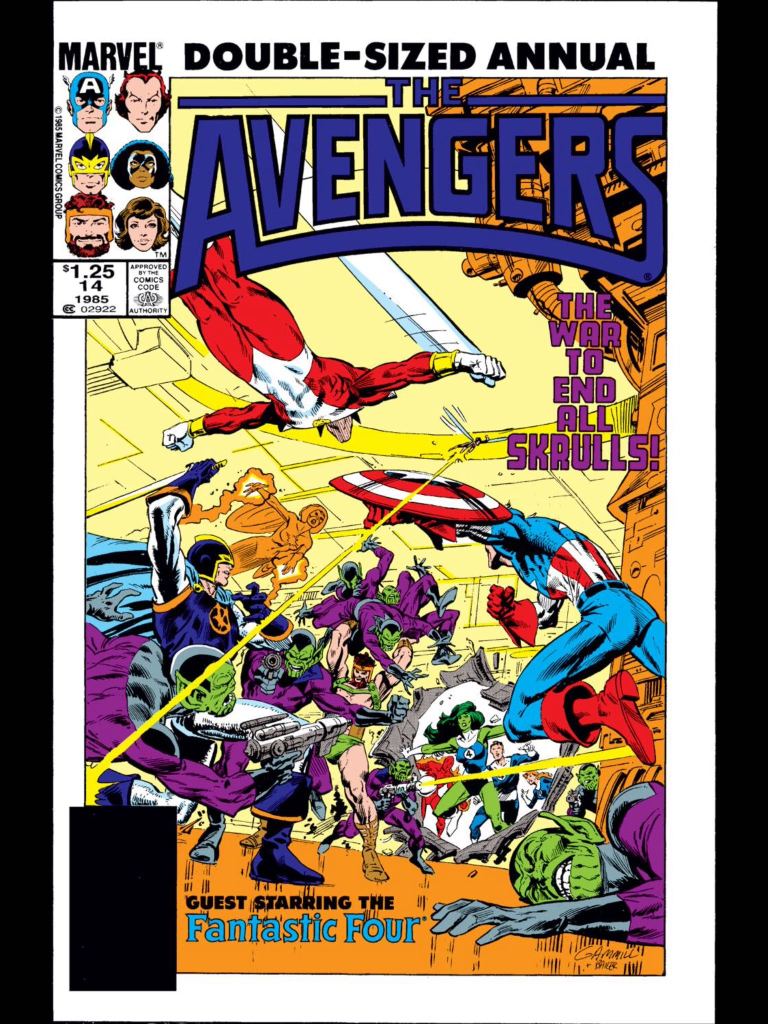
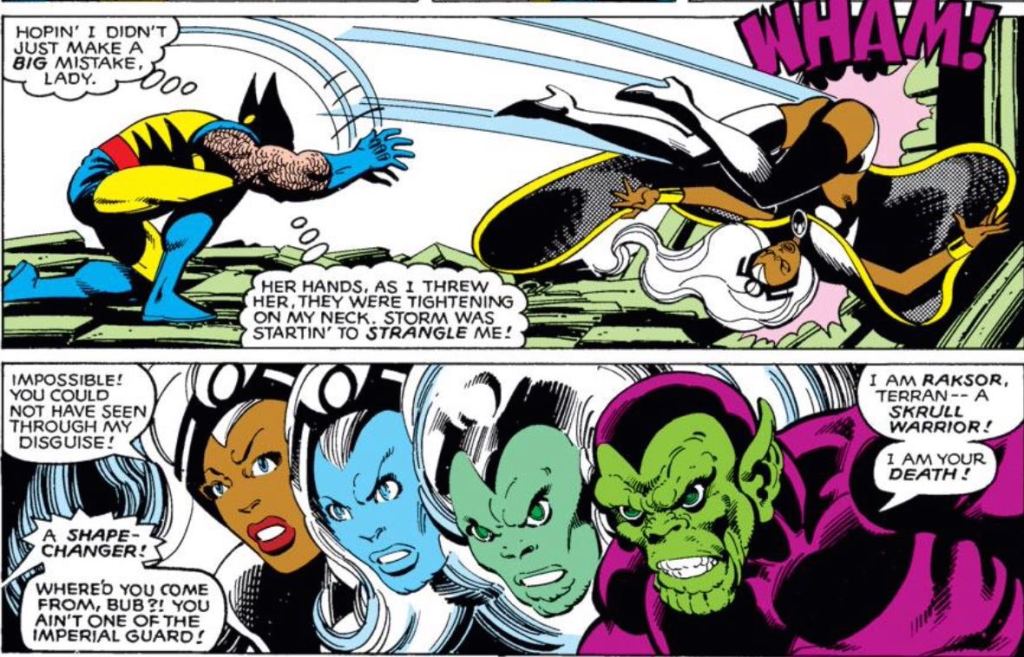
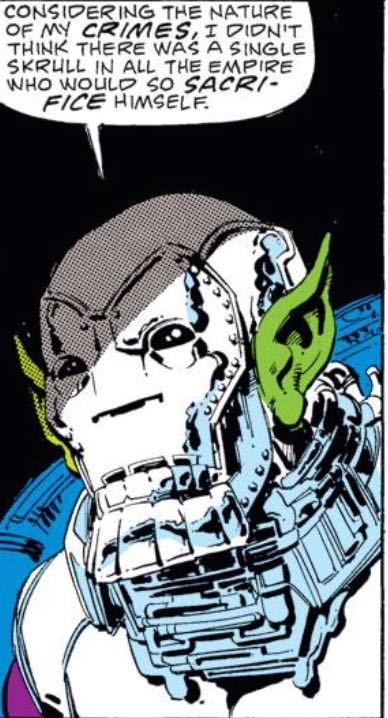
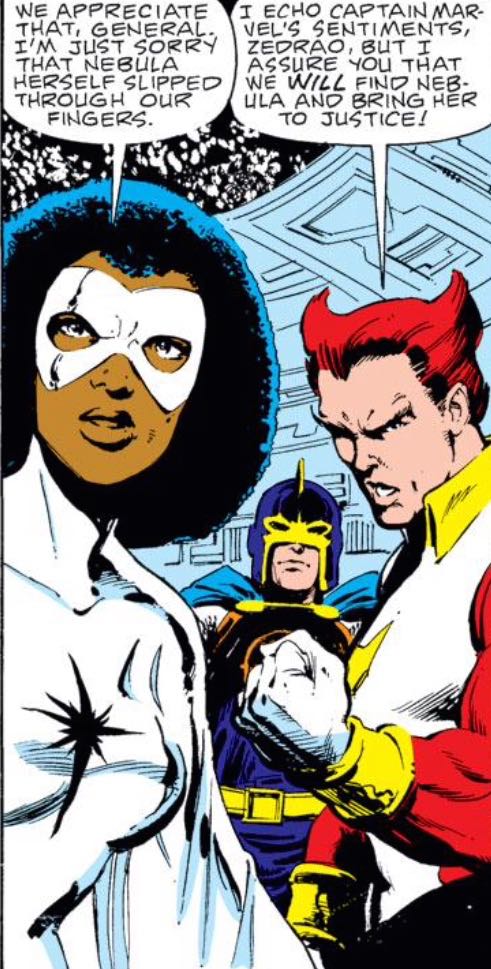
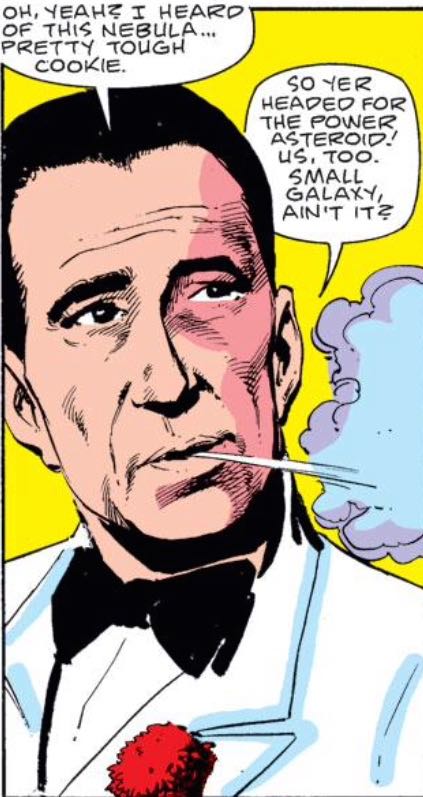
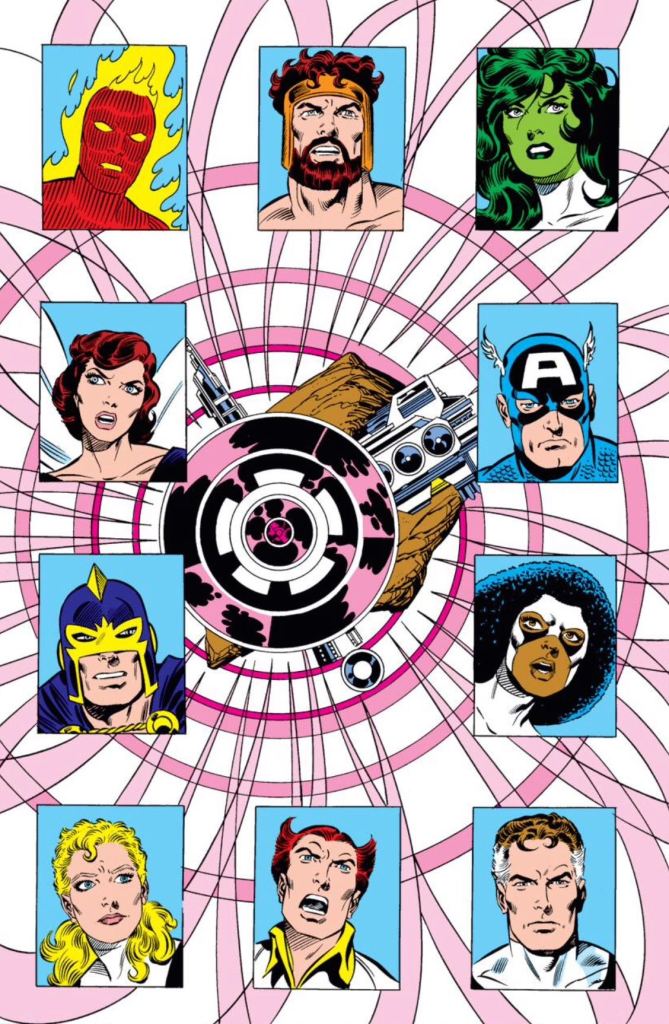
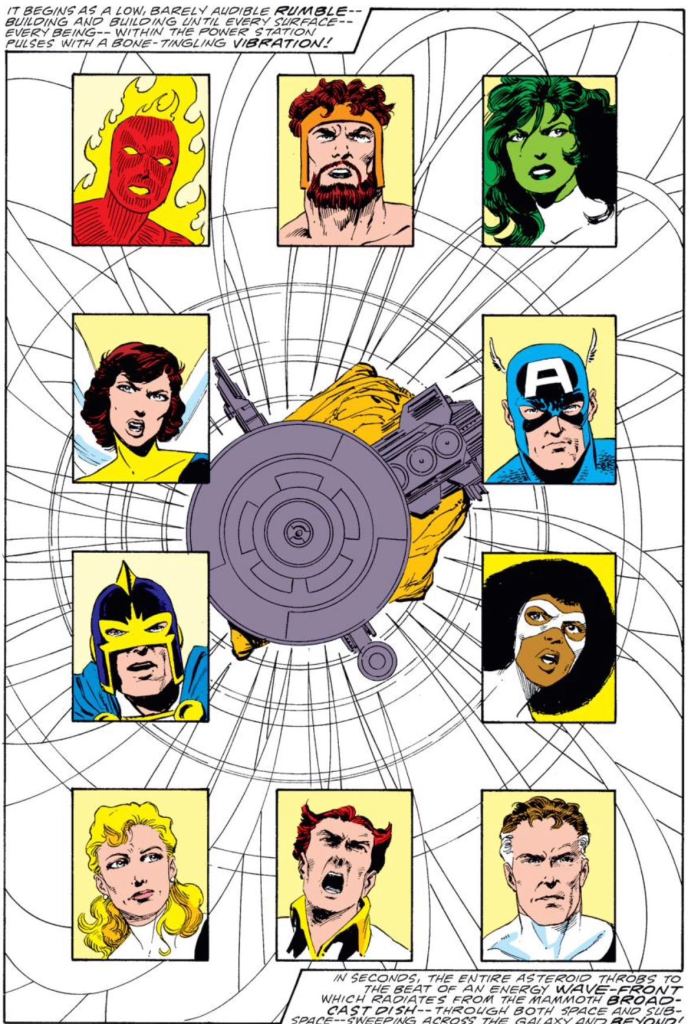
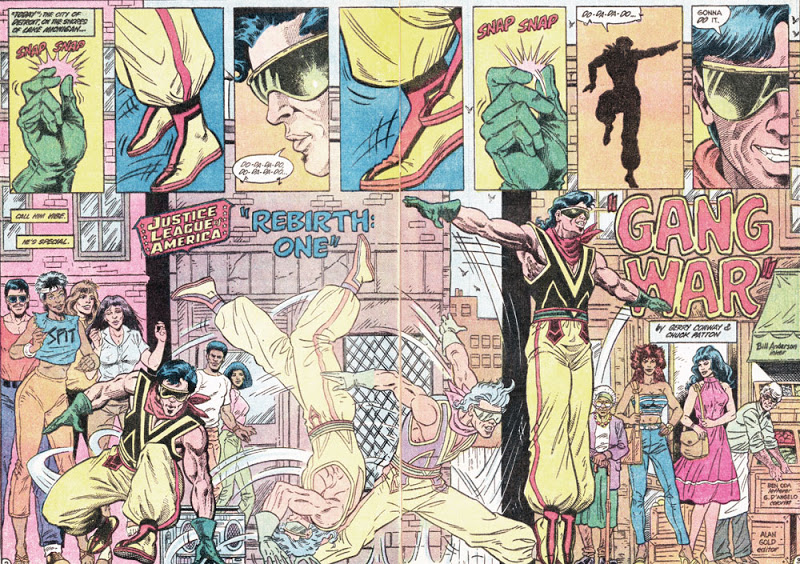




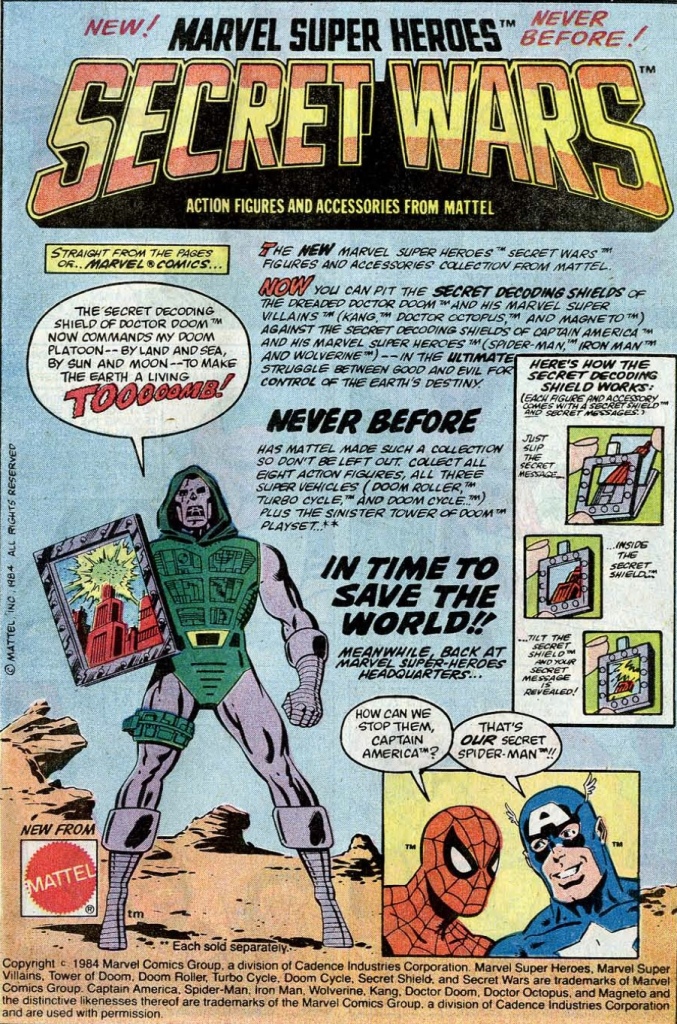
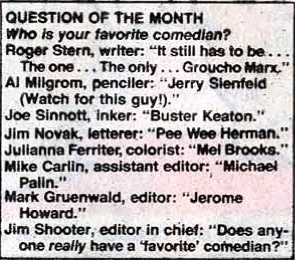

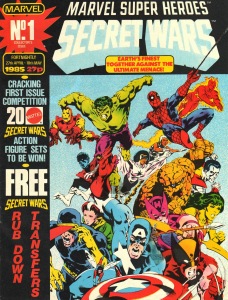 I read the series, eventually, in its UK-reprint form, which meant that the original issues were split across two issues and paired with an increasingly strange selection of back-up material. It started with Alpha Flight, because nothing says “obvious selection for a British superhero comic” than “a second-rate Canadian super team,” but things got weirder from there — J.M. DeMatteis and Alan Kupperberg’s Iceman mini-series showed up at one point, as did Zoids. And yet, I loved it dearly. I was, what, 10 or 11 years old or so, and it was everything I could’ve wanted in a comic: so many superheroes, and so many villains, and that Mike Zeck art! How could I resist?!?
I read the series, eventually, in its UK-reprint form, which meant that the original issues were split across two issues and paired with an increasingly strange selection of back-up material. It started with Alpha Flight, because nothing says “obvious selection for a British superhero comic” than “a second-rate Canadian super team,” but things got weirder from there — J.M. DeMatteis and Alan Kupperberg’s Iceman mini-series showed up at one point, as did Zoids. And yet, I loved it dearly. I was, what, 10 or 11 years old or so, and it was everything I could’ve wanted in a comic: so many superheroes, and so many villains, and that Mike Zeck art! How could I resist?!?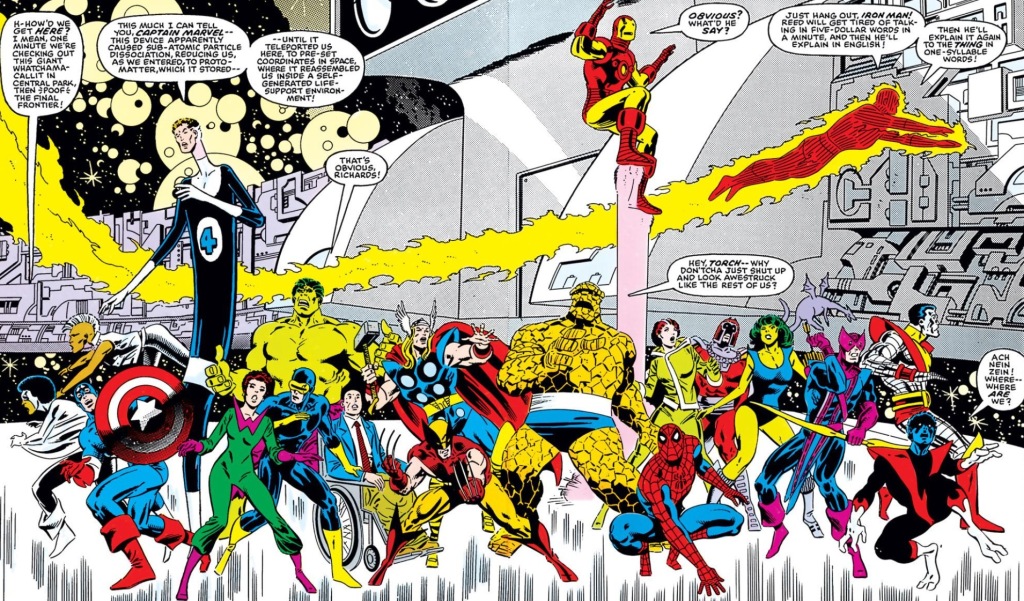
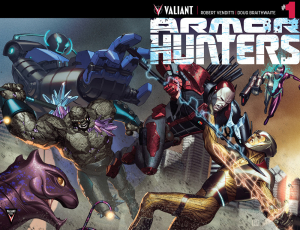
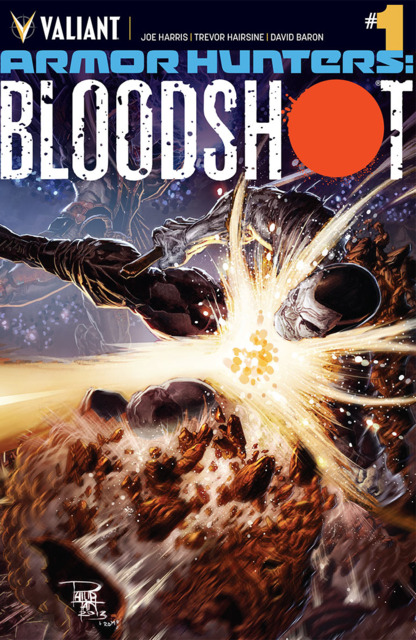 Armor Hunters: Bloodshot #1-3: In many ways, the Bloodshot mini does everything I wanted from the Unity issues — it tells a story within a story, something that feels complete (or, really, complete enough) yet slots easily within the larger event. That’s particularly impressive considering that there’s a bunch of heavy lifting writer Joe Harris has to do in here, regarding the status quo of Bloodshot following the end of his last series and setting up what’s to follow. Yet it looks, if not effortless, than at least seamless — the flashbacks feeling relatively organic even if the main plot feels very out-of-sorts with what could be expected from a Bloodshot story.
Armor Hunters: Bloodshot #1-3: In many ways, the Bloodshot mini does everything I wanted from the Unity issues — it tells a story within a story, something that feels complete (or, really, complete enough) yet slots easily within the larger event. That’s particularly impressive considering that there’s a bunch of heavy lifting writer Joe Harris has to do in here, regarding the status quo of Bloodshot following the end of his last series and setting up what’s to follow. Yet it looks, if not effortless, than at least seamless — the flashbacks feeling relatively organic even if the main plot feels very out-of-sorts with what could be expected from a Bloodshot story.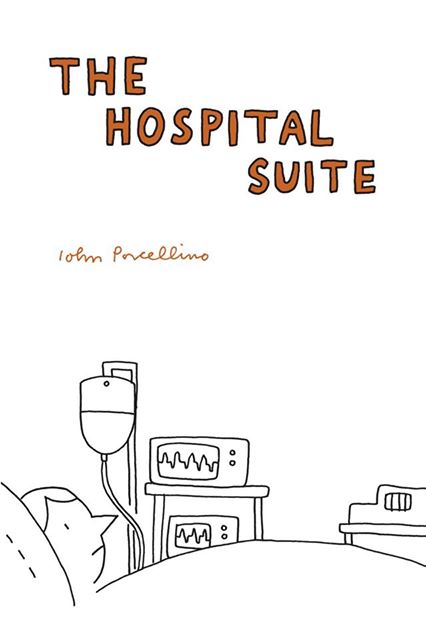


Recent Comments